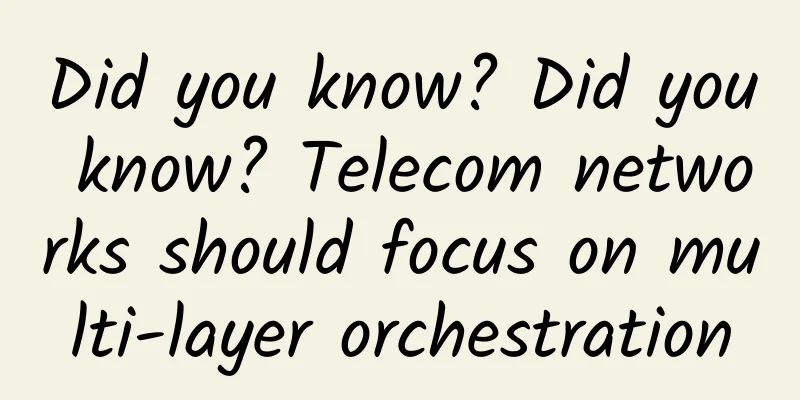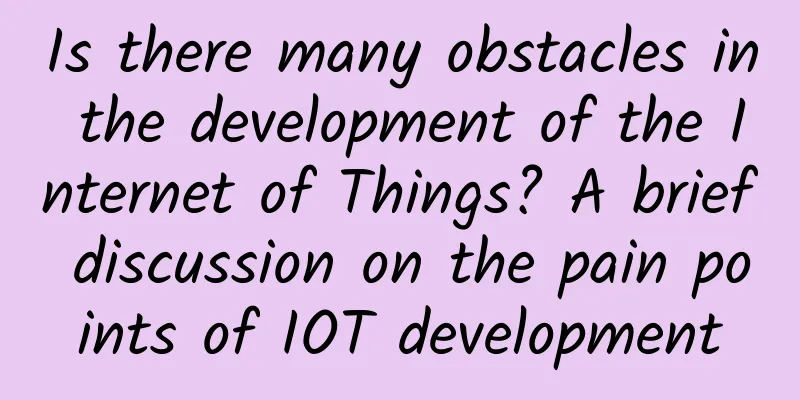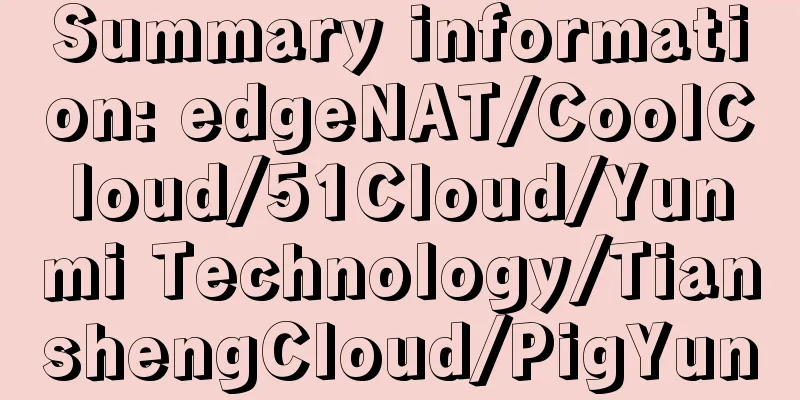Did you know? Did you know? Telecom networks should focus on multi-layer orchestration

|
A few years ago, the word “orchestration” was hardly used by telecom operators and was mainly used in the music industry. Today, there are different opinions on what “orchestration” means; it is often used interchangeably with management, controller, etc… When ETSI [1] NFV Orchestrator introduced NFV (Network Function Virtualization) to the communications industry, NFV Orchestrator was a new functional block that attracted a lot of attention. Since then, many orchestration solutions have been specified and implemented by different forums, specification bodies, communications service providers and product vendors. Over time, it has been further realized that having only one orchestrator is not enough and efficiency cannot keep up, and multiple layers (at least two) of orchestration are needed. For example, Open Source MANO (OSM) [2] defines 2 layers of business processes, namely Service Orchestrator (SO) and Resource Orchestrator (RO). Similarly, Open Network Automation Platform (ONAP) [3] defines at least 2 layers of business processes, namely Service Orchestrator (SO) and Virtual Function Controller (VF-C), the latter of which is aligned with the ETSI NFV-Orchestrator function.
Defining the Orchestration The functions of orchestration include coordination and management. While the coordination part is mandatory, the management function is optional. The coordinator does not have absolute authority over the components or entities it needs to work with, while the manager has full authority over the entities involved. The manager can make all aspects of the life cycle of the subject components on its own. The manager itself may be controlled by a higher-level management entity, but the downward management entity enjoys exclusive absolute authority over the components it manages. On the other hand, the coordinator must cooperate with the entities. Before issuing a command, the coordinator does not know whether the command will be successfully executed. Therefore, a coordinator in the true sense issues requests rather than sending commands, and readjusts its operations based on the response to achieve the desired goal. The coordinator must work within these limitations to achieve its goals. Another term, often used in SDN, is controller. This basically controls a certain behavior or aspect of the subject entity. Although it does not have absolute authority over the life cycle of the component, it can exercise control over specific behaviors and sometimes share this authority with other controllers. The result of coordination may result in the creation of a temporary element (such as a network service), and the coordinator can manage the life cycle of this new element. Orchestration in ETSI NFV MANO In the case of NFV MANO architecture, the NFV orchestrator (NFVO) coordinates with the Virtual Network Function Manager (VNFM) and Virtual Infrastructure Manager (VIM). The latter two manage virtual network functions (VNF) and virtual infrastructure (VI) respectively, and NFVO coordinates with these two managers to create a new transition entity: Network Service (NS). NFVO acts as a manager, and NFVO manages the life cycle of NS using requests to VNFM(s) and VIMs. In most architectures, we see NFVO working together with the service orchestrator. Multi-layer orchestration In a layered business process solution, the orchestrator of a given layer needs to use a higher-level coordinator instead of a manager. Because the higher-level manager will expect command-confirmation behavior instead of best-effort request-response behavior. The lower-level orchestrator cannot guarantee the requested operation of the higher-level entity. In a multi-layer business process architecture, the orchestrator at the top of the hierarchy is responsible for orchestrating multiple lower-level orchestrators or other management entities (such as VIM or VNFM). There are many factors that influence how a particular layered business process solution is implemented. Some of these factors are:
The following diagram illustrates the hierarchical layers of the orchestrator; each layer of business processes handles a different level of abstraction, and some layers are structured based on geographic regions and network domains. There are of course many other combinations in which layered orchestrators can be constructed, and the following is one possible scenario. Coordination interface between layered orchestrators The interface construction between multi-layer orchestrators is completely different from traditional management systems. Typically, the interface between management systems is command/operation oriented, i.e., a higher-level management system issues a command or triggers an operation on a lower-level management system, and the command/operation is successful or reports an error. A multi-orchestrator environment requires different interface design approaches between orchestrators at different levels. Some key common features of the interfaces between multiple orchestrators (besides the interface reflecting the coordinator functionality): (1) Intent-based interface VS command/operation-based: The higher-level coordinator expresses its intent to the lower-level coordinators, and the lower-level coordinators in turn decide how to achieve that intent by orchestrating the various entities within their scope. (2) Conversational style of interface vs. request/response paradigm Orchestrators exchange conversations rather than request/responses, for example, a service orchestrator might request a WAN orchestrator to create a network service in a specific geographic area with a specific QoS, and the WAN orchestrator analyzes the request based on information gathered from management systems, analytics feeds, and VIMs, and returns viable alternatives (assuming the original QoS requirements cannot be fully met, etc.). The service orchestrator can then select one of the alternatives, or decide to change the original request to consider the suggested alternatives. This conversational style enables the orchestrator to act at different levels of abstraction, mitigate potential deadlocks, and ensure appropriate reservation of network resources to efficiently achieve the original intent. (3) Best Effort vs. Guaranteed Action Semantics Unlike traditional management systems, orchestrators, by definition, are oriented toward best-effort based semantics. For example, if a service orchestrator expresses an intent to instantiate a set of VNFs to an NFV orchestrator, the NFV orchestrator might choose a slightly different combination or configuration of VNFs to achieve the intent based on the real-time information it has on aspects such as NFVI resource availability. This intent-based best-effort semantics means that the approach taken to achieve end-to-end system reliability must be different from that of traditional management systems. One possible approach is to leverage the coordination and management capabilities of the orchestrator. Multi-layer orchestration - key benefits Unlike management systems, orchestrators are primarily responsible for sharing control, handling conflicts, and ensuring that the primary intent (which includes various QoS features required for operational efficiency and effectiveness) is achieved on a best-effort basis. Only by adopting a collaborative approach with multi-layered coordination can the true benefits of NFV and SDN be realized in telecom networks. in conclusion Telecom networks are complex and need to be managed from multiple perspectives. Orchestration architectures allow operators to loosely couple monitoring and control of the network from different perspectives while ensuring consistent behavior across the system. A coordinated approach, rather than a master-slave approach, ensures that both low-level and high-level goals are dynamically balanced. In a multi-layer orchestration architecture, care should be taken to ensure that the coordination approach is preserved across layers and that the intent of the organization is dynamically communicated in the management system. refer to
Original link: https://sdn.ieee.org/newsletter/november-2018/architecting-multi-layer-orchestration-for-telco-networks |
<<: How to Understand Fog Computing and Edge Computing in Simple Terms
Recommend
Huawei Mate X: The Future of the Future
Looking back at the year 2019 that is about to en...
What is edge computing in IoT?
The growing number of “connected” devices is gene...
Canada to launch 3500MHz 5G spectrum auction
According to foreign media reports, Canada will l...
The seven-layer network model and TCP/UDP that you will forget after reading it once, let me popularize it for you again
In order to enable different computer manufacture...
As 2G network is being phased out, how should the three operators do so in a way that would be reasonable for “users”?
Since the news that Apple 13 completely abandoned...
Huawei launches intelligent network to unleash the power of ultra-broadband with intelligence
[51CTO.com original article] Hangzhou, China, Oct...
SpringCloud Alibaba Microservices Practice: Gateway Authorization VS Microservices Authorization
[[386274]] This article is reprinted from the WeC...
The beauty of 5G phone is like being in your ear
[[352290]] This article is reprinted from the WeC...
Required course: VLAN is so important! Share VLAN planning and configuration examples in two most common scenarios!
1. Common scenario 1 - restaurant/hotel 1. Backgr...
5G is the best? GSA: Gigabit LTE is advancing rapidly
[[375841]] When it comes to the world's hotte...
The mobile phone business was hit hard in 2020: Even the 5G boost could not save sales
Even though 5G has been gradually deployed to mai...
Mobile Data and Broadband Outlook 2017: Consumers Expect More Inclusive Data Plans
According to foreign media reports, as an industr...
80VPS: Hong Kong CN2 server monthly payment of 600 yuan, E5-26**V2/16GB/1TB or 600G*2/20M bandwidth, optional CN2 high defense
80VPS is a long-established Chinese hosting compa...
Distributed ID Solution Detailed Explanation
In a distributed system, it is very important to ...
ZJI: 55% off on Hong Kong Kwai Wan dedicated servers, E3/E5 servers CN2+BGP lines starting from 550 yuan/month
As autumn is approaching, ZJI has launched a prom...









